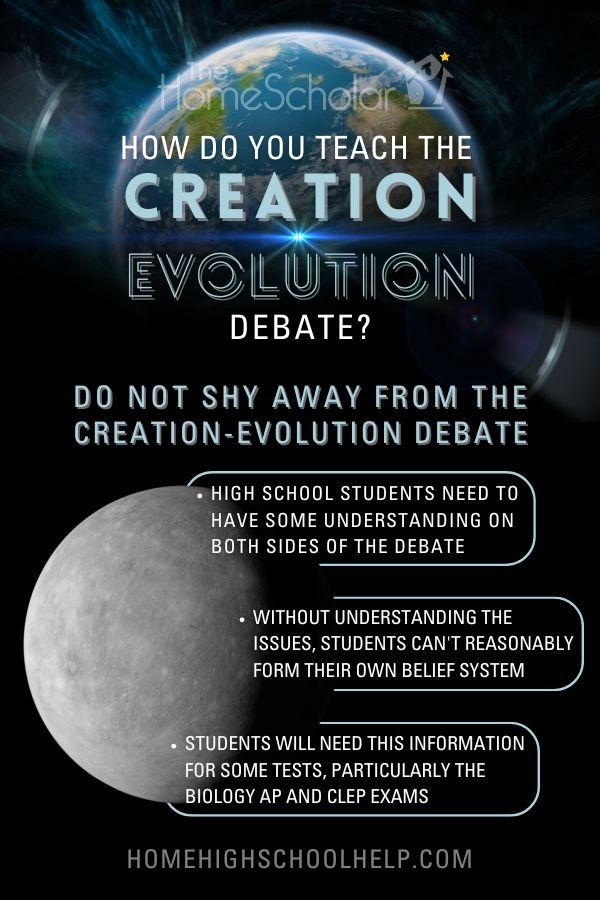Do not shy away from the creation-evolution debate. While it’s not critical to teach to younger children, high school students need to have some understanding on both sides of the debate. Whether you are on the creation side or the evolution side, it’s essential that your student get teaching from both sides of the debate.
When I was homeschooling, we had numerous books on the topic at home, and we used Apologia science textbooks, which have an explanation of the creationist viewpoint. We didn’t shy away from evolution and some of our schoolbooks came from an evolution standpoint. We had MANY discussions in our home about creation, evolution and “intelligent design.” My mom made sure that I had both points of view so I could understand the concepts of evolution and explain my own beliefs to others. She told me about her own stance on creation vs evolution clearly, then gave me the materials I needed to decide for myself.
You should be able to teach earth science purely from a scientific view. But the study of the earth is usually tangled with a worldview (be that creationist or evolutionist) that is presented as science, and not as the philosophy that it is. For instance, in most geology texts, when you study the makeup of the earth, you also study its age and how it was created. Neither of those things can be proven by science, but it is presented as science. Again, it is one thing to study different types of volcanoes, the makeup of lavas, the effect of volcanoes and it is another matter entirely to discuss the creation of earth where these volcanoes exist. One is a study in science, the other philosophy or history. If all you are studying is the facts, well then, yes, you can study geology without a worldview. But if you intend to discuss the origin of rocks, what created the Ice Age, or hope to understand how volcanoes fit into a very good creation, then you must choose a side. And high school is a great place to make sure that in studying earth science that you delve into the importance of this difference.





